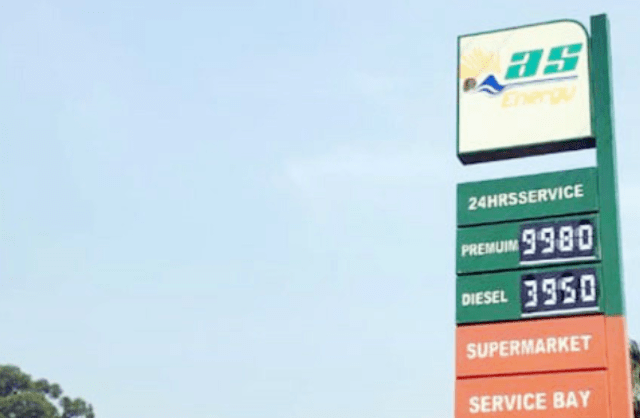Africa’s petrol shock map: Shs 100 in Libya, Shs 5,000 in Uganda

Fuel prices, especially petrol, have shot up
Fuel prices in Uganda are high
Across Africa, the price of a single litre of petrol can determine whether families eat, whether markets open, or whether a taxi driver makes it home with a decent earning. In Libya, that litre costs less than a bottle of water.
In Uganda, it can swallow a day’s earnings. The numbers expose a continent living in two economic realities, one cushioned by oil wealth and subsidies, the other battered by imports, weak currencies and global shocks.
Here’s what Africa’s fuel divide really looks like, and why it matters now more than ever. In Tripoli, a taxi driver fills his tank for barely the price of a cup of tea. Ten hours south, across the Sahara in DR Congo’s Goma, a motorcycle rider calculates every kilometre because a single litre of fuel costs more than a day’s pay for many.
The two men live on the same continent, but their realities might as well be different planets. This is the story the numbers tell. Libya’s petrol, at just $0.028 per litre (about Shs 100), is the cheapest in Africa, according to Global Petrol Prices.
In the DR Congo, a litre goes for $1.039 (Shs 3,700), roughly 37 times more. And in East Africa, where millions of people rely on fuel for transport, food distribution and survival, prices climb even higher: Shs 4,950 to 5,060 in Uganda, nearly Shs 4,900 in Rwanda, and Shs 4,888 in Kenya.
Fuel is not just a commodity. Across Africa, it is a mirror, reflecting economies under pressure, governments facing hard choices, and households navigating the thin line between mobility and immobility.
WHY LIBYA PAYS PENNIES
Libya’s ultra-cheap fuel is no mystery. Massive subsidies and abundant crude reserves keep prices artificially low.
“Libya is one of the few countries where fuel prices have barely moved in a decade,” an energy economist in Cairo said. “The state absorbs the shock.”
But that model comes at a cost, fuel smuggling, subsidy fraud and deep distortions in the economy. Libya spends billions each year to maintain what many see as politically essential cheap fuel. Compare that to Uganda, Kenya and Rwanda, countries without functional refineries, importing nearly all their fuel through global markets.
The result is predictable: higher prices shaped by shipping costs, international crude prices, insurance, taxes and, increasingly, the strength of local currencies. Uganda and Kenya have in the last three years seen some of the sharpest fuel spikes in the region, driven partly by global market shocks but also by the depreciation of their currencies.
“Uganda’s fuel price is not just about oil,” said a Kampala-based macroeconomist. “It’s also about the shilling. When you import everything, your currency becomes your biggest vulnerability.”
THE NIGERIA PARADOX
Nigeria, Africa’s biggest oil producer, sits awkwardly in the middle. At $0.586 per litre (Shs 2,000), prices are relatively low but not nearly as cheap as many expect from an oil giant.
That’s because, until recently, Nigeria lacked functioning refineries and imported nearly all its fuel. But that may be about to change. With the new Dangote refinery expected to start large-scale production, analysts predict a dramatic price shift.
“If Dangote hits full capacity, you could see Nigeria move into the top three cheapest countries,” said a West African energy analyst.
“It could transform West Africa’s fuel landscape.” If Nigeria begins supplying refined fuel to the region, the ripple effects could reshape everything from inflation in Ghana to transport fares in Benin.
Not every country’s fuel story is written in boardrooms and oil fields. For some, it’s written in conflict. War-torn Sudan’s price, $0.700 per litre (Shs 2,400), is the cost of war. Supply chains have collapsed. Currency values have plummeted. Fuel, like bread and medicine, is now part of the humanitarian crisis.
Tunisia, Liberia, and Ethiopia, each hovering near Shs 3,000 per litre, sit in a different category: struggling economies weighed down by debt, IMF restructuring, subsidy cuts, and currency instability.
“Fuel subsidies are politically seductive but economically dangerous,” an African Development Bank official explained.
“Remove them suddenly, and you have riots. Keep them too long, and you sink the economy. There is no easy path.”
EAST AFRICA: THE MOST EXPENSIVE NEIGHBOURHOOD
Nowhere is the pain more visible than in East Africa. In Tanzania, fuel costs about $1.14 per litre (Shs 4,000). In Rwanda, nearly Shs 4,900. In Kenya, Shs 4,888. Uganda pays the most, Shs 4,950 to 5,060, making it one of Africa’s highest fuel-priced nations.
Why does East Africa consistently sit on the high end? Three reasons stand out: Import dependence. None of the four countries have working refineries. All import fuel, mostly through Kenya. Currency pressures.
The Ugandan and Kenyan shillings have weakened sharply. Taxes. Fuel taxes account for nearly 40–50 percent of pump prices in Uganda and Kenya.
“East Africa pays the price of geography and policy,” said a regional petroleum economist. “Landlocked countries feel the pain most.”
On the ground, these numbers shape everything: the cost of matoke in Kampala, boda-boda fares in Kigali, taxi prices in Nairobi, and food inflation across the region. Fuel is the invisible thread running through Africa’s informal economies.
When it rises, everything else follows. A Ugandan taxi driver put it bluntly: “When petrol goes to 5,000, life stops.”
THE LONG VIEW: AFRICA’S ENERGY FUTURE IS BEING REWRITTEN
Across the continent, three long- term trends are emerging: A shift toward domestic refining. Nigeria, Angola, Uganda (with its upcoming refinery), and Tanzania all plan to reduce reliance on imports. A slow but real energy transition.
From Kenya’s EV boda-boda pilots to Rwanda’s electric buses, alternative mobility is no longer a fantasy. A geopolitical realignment. Gulf states, China, and Russia are expanding their influence through fuel supply chains, financing, and logistics.
The balance of power in Africa’s fuel markets is changing—and with it, the economic destiny of millions. Africa’s fuel story is a story of extremes. Some nations drown in subsidies; others drown in debt.
Some have too much oil; others have none. Some are building refineries; others are tearing apart budgets to keep fuel flowing. But across the board, one truth stands: Fuel prices are not just numbers.
They are the daily heartbeat of African economies and the silent force shaping inequality, stability, and opportunity. In the years ahead, Africa’s struggle with petrol, how it’s priced, taxed, imported, or refined, will become one of the defining economic battles of the continent. For now, a taxi driver in Tripoli will keep filling up for pennies.
And a boda rider in Kampala will keep watching the pump, one litre at a time, paying the cost of a global system









0 Comments